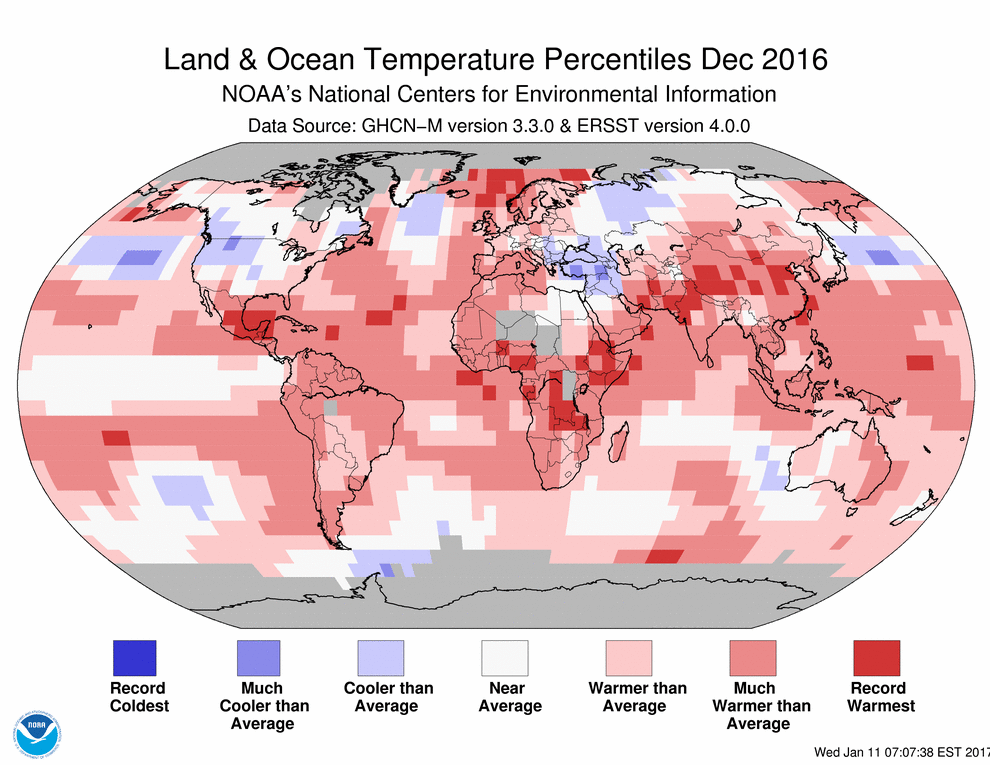The maps shown below are fromhere. The first shows data from two sources, while the second only shows data from one source.
What is the difference between the two data sources used? Where does it come from, and what is the accuracy?
What is the reason the first map has data the second one doesn't? The most reasonable conclusion is that it comes from the ERSST data that's not in the second map, but it would be nice to know why there is a difference.
A question was posted on theSkeptics siteregarding the claims made in the linked blog post. However, the existing answer currently does not provide much detail and comments were posted suggesting that this site may be able to provide more information about the NOAA data and the science behind it.




